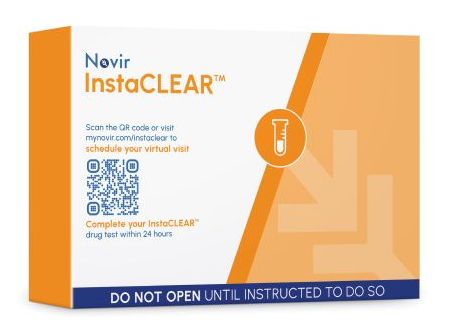Drug testing plays a vital role in ensuring workplace safety, productivity, and compliance with regulations. Two common categories of drug testing are DOT (Department of Transportation) and non-DOT drug testing. While both serve the purpose of identifying drug use, it is essential to understand their key differences. In this article, we will delve into the contrasts between DOT and non-DOT drug testing to provide a comprehensive understanding of each.
DOT Drug Testing
DOT drug testing is specifically mandated by the Department of Transportation for safety-sensitive positions. These positions include commercial drivers, pilots, railroad workers, and other transportation-related personnel. The primary purpose of DOT drug testing, therefore, is to ensure public safety and reduce accidents caused by drug impairment in safety-sensitive roles.
- Drug Panels and Testing Methods: When it comes to the substances to be screened, DOT drug testing follows strict guidelines. The standard DOT drug panel includes marijuana (THC), cocaine, amphetamines, opioids, and phencyclidine (PCP). In most cases, the testing is conducted through a urine sample collection, or soon, an oral fluid sample collection. Once collected, the sample is analyzed by a certified laboratory to determine the presence of any illegal substances.
- Required Procedures and Compliance: Additionally, DOT drug testing adheres to specific regulations that cover multiple aspects. These include specimen collection, testing procedures, and the Medical Review Officer (MRO) review process. Moreover, DOT testing maintains strict chain-of-custody protocols, ensuring the consistency and reliability of the testing process. As a result, the integrity of the results is upheld, minimizing the chance of errors or tampering.
- Consequences of Positive Results: If an individual tests positive in a DOT drug test, the consequences can be severe. First, they are immediately removed from safety-sensitive work and referred to a Substance Abuse Professional (SAP). In addition, they may face suspension, termination, or other disciplinary actions, depending on their employer’s policies and the specific DOT agency overseeing their industry. Furthermore, before returning to safety-sensitive duties, the individual must undergo a substance abuse professional’s evaluation and complete the required return-to-duty process.
Non-DOT Drug Testing
Unlike DOT testing, non-DOT drug testing is not mandated by federal regulations. Instead, employers implement it at their discretion to ensure a safe and drug-free workplace. The scope and guidelines for non-DOT drug testing are determined by the employer, based on factors such as company policies, industry standards, and legal requirements. Therefore, employers have more control over how and when they conduct testing.
- Customizable Panels and Testing Methods: In contrast to DOT testing, non-DOT drug testing offers employers the ability to customize drug panels according to their specific needs. Commonly screened substances in non-DOT tests include marijuana, cocaine, amphetamines, opiates, benzodiazepines, barbiturates, and synthetic drugs. Testing methods also vary and can include urine, saliva, hair, or even blood samples, depending on the employer’s preference and needs.
- Flexibility and Confidentiality: Since non-DOT drug testing is not subject to federal regulations, employers enjoy greater flexibility in designing their drug testing programs. They can establish policies on collection procedures, testing frequency, consequences for positive results, and confidentiality measures. However, employers must still comply with relevant state and local laws regarding drug testing. This flexibility allows for tailored programs that best meet the needs of each workplace.
- Implications of Positive Results: The consequences of a positive non-DOT drug test vary depending on the employer’s specific policies. Employers may impose disciplinary actions, require mandatory counseling or treatment programs, or even terminate employment. It is crucial that employers clearly communicate their drug testing policies to employees. Additionally, employers must consistently enforce these policies to ensure a drug-free workplace and maintain fairness in their operations.
Key Differences:
DOT Drug & Alcohol Testing |
Non-DOT Drug Testing |
|---|---|
| Required for DOT-regulated employers | Not required, but recommended for safety-sensitive workers |
| Trained and qualified specimen collectors required | Use of trained and qualified specimen collectors is a best practice |
| Federal CCF Required | Forensic CCF required, use of Federal CCF prohibited |
| SAMHSA-certified lab required | Use of SAMHSA-certified Lab is a best practice |
| Only DOT 5 panel drug test allowed | Many drug test panels allowed |
| Only lab-based tests for drugs in a SAMHSA certified laboratory are permitted | Most states permit instant or rapid (POCT) tests |
| Urine and oral fluid are the only approved specimen types for drug tests | Most states permit urine, oral fluid, hair or blood samples for drug tests |
| Marijuana testing required | Marijuana testing is optional |
| MRO review of drug test results required | MRO review of results is a best practice, often required by a state law |
| Random testing required | Random testing is optional, but limited in some jurisdictions |
| Breath alcohol testing required for several test reasons | Alcohol testing is optional |
| Required removal of employee from safety-sensitive work when testing positive, or refusal | Employer decides on adverse actions for a positive test or refusal to test |
| Substance Abuse Professional (SAP) required | Referral to an Employee Assistance Program (EAP) is best practice |
| Return to duty and follow up testing required | Return to duty and follow up testing is a best practice |
| DOT program has strict recordkeeping requirements | Keeping complete records is a best practice |
Conclusion
Understanding the distinctions between DOT and non-DOT drug testing is crucial for both employers and employees. DOT testing is mandated by federal regulations for safety-sensitive positions, following specific procedures and consequences. Non-DOT testing, on the other hand, is at the employer’s discretion, offering flexibility in customization but requiring compliance with applicable laws. By implementing the appropriate drug testing program, employers can promote a safe and productive work environment while maintaining compliance with relevant regulations.


